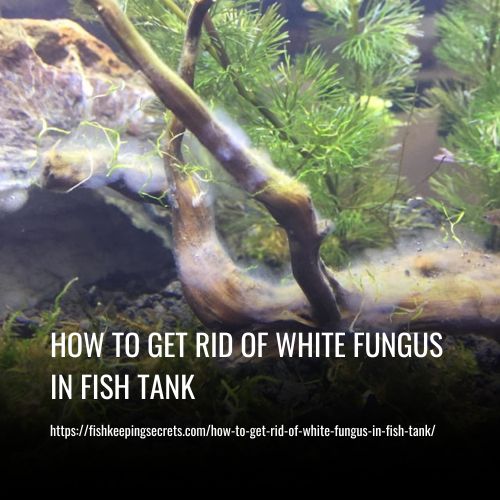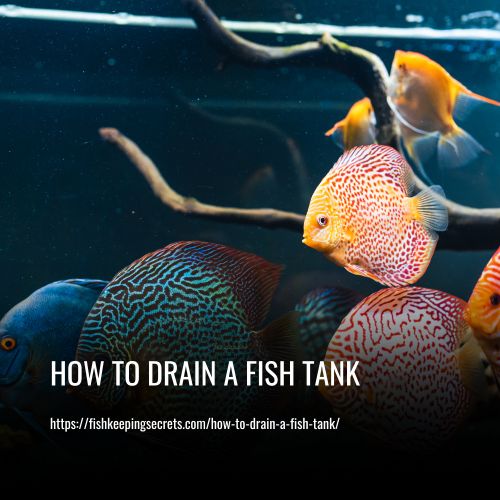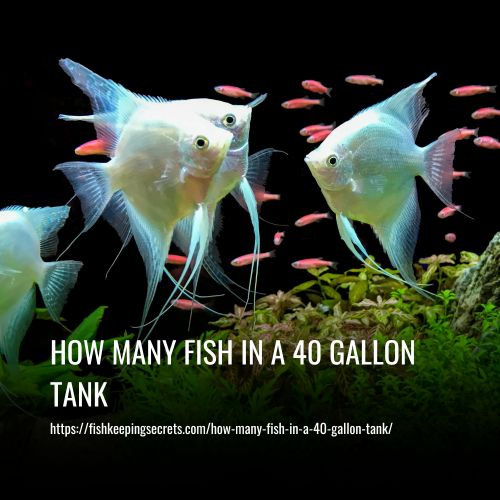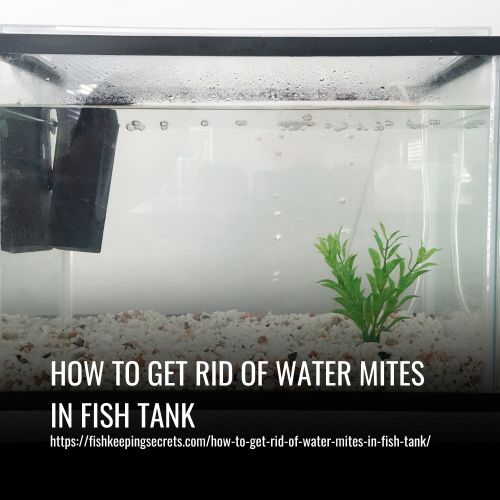How To Soften Fish Tank Water
This post contains affiliate links. As an Amazon Associate, we earn from qualifying purchases.
Fish tanks are generally easier to take care of than other animals but even they require some special attention! One of the most important aspects of keeping your fish tank in great condition is the water quality. It’s essential that you not only check and treat the water for bacteria or other contaminants but also soften it for a healthy environment.
To Soften Fish Tank Water, follow these Tips:
- Add Rainwater To Your Aquarium.
- Add Driftwood to Your Aquarium.
- Catappa Leaves.
- Distilled Water and Demineralized Water.
- Reverse Osmosis.
- Use Water Softening Pillows.
- Use Peat.
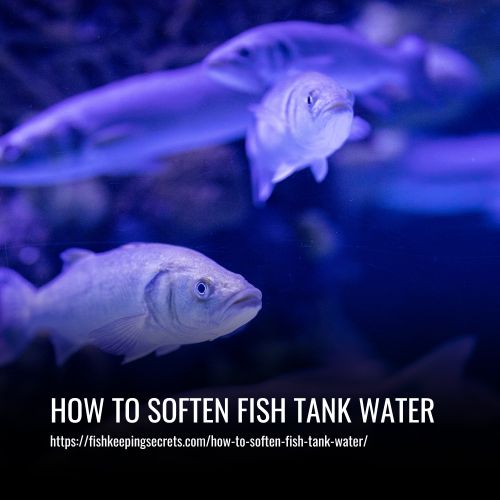
How to Soften Aquarium Water
Water hardness is a major factor in establishing and maintaining a healthy aquarium ecosystem. Hard water can be detrimental to the health of your fish, so it’s important for aquarium hobbyists to understand how to soften their water.
There are several ways to soften water for an aquarium, including reverse osmosis filtration, boiling water, and using chemical-free media such as peat moss or carbon. Reverse osmosis can be used to remove a wide range of chemicals from the water which helps reduce hardness. Boiling water helps by releasing some of the minerals in the water which make it softer. Adding chemical-free media such as peat moss or carbon to your tank also helps reduce hardness by binding with calcium and magnesium ions in the water.
1. Add Rainwater To Your Aquarium:
Softening your aquarium’s water does not have to cost you a fortune. Collecting rainwater can be an effective and free way to soften your fish tank’s water. However, precautions should be taken before collecting rainwater for use in your tank.
Ensure that the air quality where you are living is safe and free from chemicals and that the container used for collection is sterilized and cleaned.
Additionally, keep in mind that you may need to add some tap water or aquatic salt to the collected rainwater in order to achieve the ideal hardness level for your fish. Taking these steps will help ensure that your fish have access to soft, clean water while keeping costs low.
2. Add Driftwood to Your Aquarium:
Adding driftwood to your fish tank can have many benefits, including lowering pH and GH levels. It can also help to prevent parasites and other unwanted species from infesting the tank. For maximum benefit, it is important to use clean and fresh driftwood.
You may also consider boiling or scrubbing it to remove any potential toxins. Additionally, be aware that adding driftwood will turn your tank’s water brown.
3. Catappa Leaves:
Catappa leaves are a great way to naturally lower the pH level in your aquarium. When added, they will leach tannins into the water which can help to gradually reduce the pH. Be sure to follow instructions on packages of these leaves to avoid lowering the pH too quickly or too much, as this can be harmful to your fish.
Additionally, it is important to note that Catappa leaves may also discolor the water. Be sure to monitor your aquarium carefully while using this method and make any necessary adjustments.
4. Distilled Water and Demineralized Water:
When choosing the right water for your aquarium, it is important to consider the type of fish you are keeping as well as any other inhabitants. For best results, it is generally recommended that aquarium owners use filtered tap water or a combination of filtered tap water and mineral additives.
Distilled and demineralized water can also be used but may require additional minerals or chemicals to replicate a more natural environment for the fish. Additionally, these types of water can become costly when filling larger tanks.
While each type has its own advantages and disadvantages, careful consideration should be taken when selecting the best option for your tank.
5. Reverse Osmosis:
Reverse Osmosis, or RO, is one of the most popular and effective ways to reduce water hardness without using any harmful chemicals or products. It can remove up to 99% of the dissolved particles in the water, such as minerals and chemicals, leaving behind only clean, pure water.
However, it is important to mix tap water with your RO-filtered water in order to create a balanced level of hardness and softness. You may also need to add some aquatic salt mixes to maintain a stable pH level in your aquarium.
6. Use Water Softening Pillows:
Water-softening pillows are a great way to reduce the hardness of your aquarium water. They work by using an ionized resin, which acts as a chemical filter media in your tank. Water-softening pillows are very efficient in reducing the levels of calcium and magnesium while slightly increasing the level of sodium.
These solutions can be easily added to your water filter and are best suited for tanks with a capacity of 25 gallons or smaller. However, if you have a larger tank, you may need to replace the resin in the pillow more frequently.
7. Use Peat:
Peat moss is a great way to soften your aquarium water by binding calcium and magnesium ions. However, it can also release gallic and tannic acids into the water and reduce the levels of carbonate and pH. If you’re planning to use peat moss in your tank, here are some methods for adding it:
- Method 1: Put the peat inside the tank filter for maximum effectiveness and consistent water flow over or through the peat.
- Method 2: Soak peat in a clean bucket for two weeks, then strain the water from the bucket into your fish tank using a fine sieve.
- Method 3: Submerge peat directly into your tank by adding it to a pillowcase, but make sure you keep adequate aeration levels in the tank.
When using peat moss, there may be a temporary brown discoloration in your aquarium due to released tannins. This discoloration is harmless and should go away soon.
What is Water Hardness in the Aquarium?
Water hardness is an important part of any freshwater aquarium. It refers to the number of dissolved minerals such as calcium and magnesium ions found in water and can be derived from natural sources including limestone, dolomite, driftwood, and Catappa leaves. Hardness levels affect pH level and act as a buffer for it.
While most fish and aquatic plants can easily adapt to hard water, too much general hardness can cause algae to outcompete them. Therefore, when setting up a new aquarium or trying to create optimal conditions for your current tank inhabitants, keeping an eye on the water’s hardness is essential.
How is Hard Water Measured
The hardness of aquarium water is an important factor to consider when caring for fish. The water’s hardness is measured by GH (general hardness) and KH (carbonate hardness). GH measures calcium and magnesium, while KH measures bicarbonate and carbonate ions. Aquarists usually measure water hardness in parts per million (ppm) or degree of hardness (dH). A degree of dH equals 17.85 ppm.
If the ppm reading is between 0 and 100 and the dH reading is between 0 and 6, the water will be considered soft or too soft. If the ppm reading ranges from 101-440 and the dH is between 6-25, then the water will be hard or slightly hard. Lastly, if the ppm reading exceeds 450, with a dH reading of 30 or more, then the water will be considered very hard or “liquid rock.” It’s important to monitor your fish closely and make any necessary changes to their environment based on these readings so that they can live happily and healthily.
Hard Water Properties
Hard water is a common issue for aquarium owners, as it can cause mineral buildup on glass and fixtures as well as lead to weak detergent or soap performance. Hard water consists of high amounts of mineral ions, such as magnesium and calcium, and leaves behind a white and chalky residue after evaporating.
There are two types of hard water: permanent and temporary. Permanent hard water requires chemicals in order to become soft, whereas temporary hard water can be softened by boiling it.
It is important to maintain the correct level of water hardness in the fish tank since without proper hardness levels, the optimal pH level cannot be achieved. Additionally, some species of fish may find it difficult to survive in hard waters due to their high mineral content. Therefore, it is important to regularly check the hardness levels of your tank’s water in order to ensure that it remains suitable for your fish’s needs.
Why Would You Need To Soften Aquarium Water?
Stabilizing the water parameters in your aquarium is essential for keeping your fish healthy. Certain fish require specific conditions, and water quality indicators such as salinity, pH, and nitrate levels must be within their ranges in order to survive. While these parameters are important, most aquarium fish have been able to adapt to variations in water hardness.
For example, soft-water fish can generally tolerate slightly hard to hard water. It is important to closely monitor all factors that could affect the health of your fish in order to ensure that they remain happy and healthy.
How To Know If Your Aquarium Water Is Soft Or Hard
Determining the hardness or softness of your water is not difficult; here are some tips to help you.
1. Ask Your Local Water Supplier:
Calling your local water company is a useful way to determine the hardness of your tap water. They can provide all the necessary information about your water, including pH levels and chemical treatments.
They can also tell you right away if your water is soft or hard. It’s important to be aware of these factors before setting up an aquarium, as they determine what type of fish and plants are best suited for the environment. Knowing this information upfront helps ensure that you have a healthy and thriving aquarium ecosystem.
2. Test Using Soapsuds:
Testing the hardness of aquarium water is important for maintaining healthy and happy fish. Fortunately, it is easy to do a DIY test using soapsuds.
First, you will need an empty, transparent water bottle. Fill ⅓ of the bottle with aquarium water and then add some liquid soap and shake the bottle for a few minutes. If the water looks milky and there are no bubbles present, then it indicates that your aquarium water is hard.
It is important to regularly test the hardness of your aquarium’s water to ensure that all of your fish are living in optimal conditions. With this simple DIY solution, you can easily check if your aquarium water is too hard or too soft without needing any expensive testing instrumentation or having to call up your tap water company.
3. Use Aquarium Test Kits:
Test kits are an essential tool for aquarium enthusiasts as they offer accurate readings and results. Test kits come in strips, powder, and liquid form and experienced fish keepers typically prefer using strips. In order to use the test strips accurately, one should fill a transparent container with aquarium water, dip the test strip into it for a few minutes, remove it, observe any color changes, and compare it to the included color chart. The chart can then help you correctly determine if your water is hard or not.
Additionally, you can also watch informative videos online that explain how to correctly use aquarium test kits.
FAQs
Reducing water hardness in aquariums can be managed with plants, water changes, a buffer solution, and water-softening pillows or moss. Knowing the number of creatures and minerals added is key. Monitor water chemistry and make adjustments for optimal conditions.
When introducing new fish to an aquarium, it’s important to consider the impact that sudden water chemistry changes can have on them. Transitions should happen slowly and gradually to give the fish time to adjust. Ignoring this can lead to serious illness or death.
Furthermore, if any signs of infection appear, quarantine the new fish longer than usual and observe closely before adding it into the main tank, as infections can spread quickly among other inhabitants.
Never change the water hardness in an established tank abruptly. When transferring fish to a new tank, try to make the water parameters similar. Too large of a difference can harm your fish.
If you need to alter the GH, do it gradually to avoid stressing your fish. Research ideal settings for each type of fish in your tank, and correctly manage water hardness for healthy and happy fish.
Conclusion:
If you want soft water in your tank, then there are several solutions available to you. You can use water conditioners and other products, or set up a reverse osmosis filter to do the job for you.
Whichever solution you choose, the important thing is that you take the time to find a solution that works for your fish tank. Softening your water can make all the difference in terms of keeping your fish healthy and happy.

